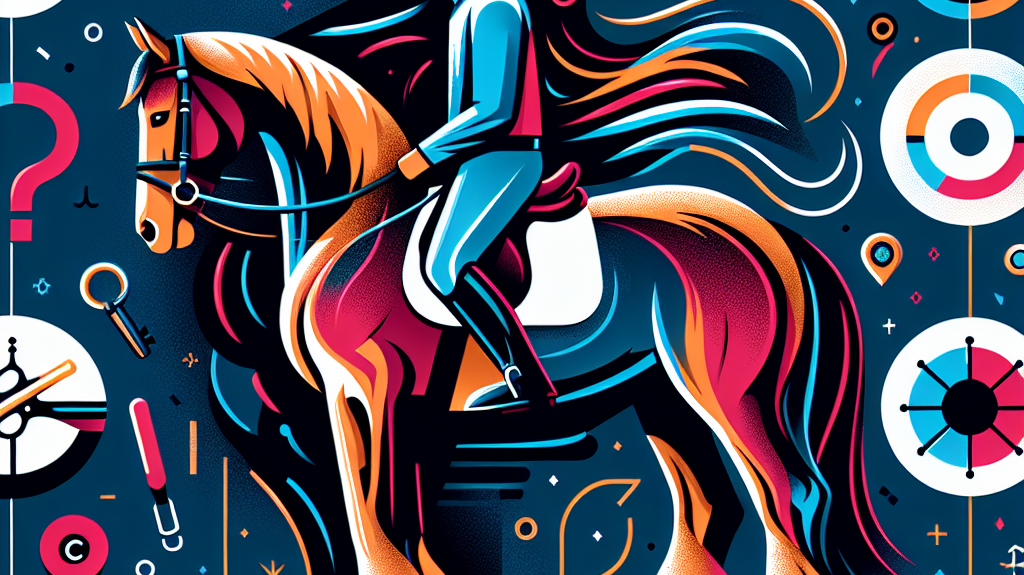The Criticality of Equestrian Road Safety: A Call for Awareness and Action
The tragic incident involving Hope Jarvis and her horse, Holly, has cast a spotlight on the ever-critical issue of road safety for equestrians. On July 27th, in Lydd, Kent, Holly was fatally injured in a road accident, prompting Hope to advocate for improved safety measures. This article delves into the details of this incident, its aftermath, and the broader implications for road safety, while also suggesting topics for further research.
The Incident: A Heartbreaking Accident
On what seemed like a regular Saturday ride, Hope Jarvis and her part-bred trotter, Holly, encountered a large group of motorbikes. Despite the motorbikes slowing down respectfully, the noise caused Holly to become uneasy. In a turn of tragic fate, as Hope guided her horse back onto the verge, a car collided with them, resulting in Holly's fatal injury—a broken leg. Holly had to be euthanized on the spot, and Hope sustained a wrist injury during the incident.
A Call to Action: Raising Awareness
Despite the police choosing not to prosecute the driver involved, Hope Jarvis has been galvanized into action. She has embarked on an awareness campaign to educate drivers and prevent similar tragedies. An event has been organized for September 14th in Bethersden, Kent, aimed at honoring Holly's memory while highlighting the importance of road safety for equestrians.
Broader Movement and Collective Effort
Hope's endeavor is part of the larger "Pass Wide and Slow" campaign, which seeks to educate drivers on how to safely pass horses on the road. Supported by the British Horse Society, this campaign advocates for reducing speed to a maximum of 10 mph and maintaining a distance of at least two meters when passing horses. Various awareness rides are being organized across the UK, showcasing the collective effort to enhance road safety.
Community Support and Personal Reflections
Hope's loss has resonated deeply within the equestrian community. Over the five years she owned Holly, the mare transformed from a fearful horse to one that competed at Hickstead. The overwhelming support from fellow equestrians has been a significant source of solace for Hope. This communal backing not only honors Holly's memory but also emphasizes the necessity of addressing road safety for equestrians.
Future Initiatives: Continuing the Fight
Beyond the awareness ride, Hope is collaborating with the local council to install warning signs on the road where the accident occurred, in a bid to prevent future tragedies. This initiative further underscores the community's commitment to ensuring safer roads for horses and their riders.
Broad Implications: The Need for Enhanced Road Safety
The incident involving Hope and Holly has underscored the pressing need for increased awareness and improved road safety measures for equestrians. The "Pass Wide and Slow" campaign, which has gained traction across the UK, serves as a crucial educational tool for drivers, emphasizing respectful and careful driving practices around horses.
Key Points of the Campaign
- Reducing speed to a maximum of 10 mph when passing horses
- Maintaining a minimum distance of two meters from the horse
- Increasing overall awareness and education about horse rider safety
Recommendations for Further Research
To deepen our understanding of the challenges faced by equestrians and work towards creating safer environments, further research in the following areas is recommended:
1. Road Safety Measures for Equestrians
Investigating existing and proposed measures to enhance safety for horse riders on roads is crucial. Understanding the efficacy of different safety initiatives can help in formulating effective strategies.
2. Laws and Regulations for Drivers around Horses
Analyzing current laws and advocating for changes to better protect horse riders can provide a legislative framework that ensures greater safety.
3. The Impact of Road Accidents on Horse Riders
Studying the psychological and physical effects of road accidents on riders can shed light on the severity of the issue, guiding more targeted interventions.
4. Case Studies on Equestrian Road Safety Initiatives
Examining successful and unsuccessful initiatives to improve road safety for horse riders offers valuable insights for future campaigns.
5. Analysis of the "Pass Wide and Slow" Campaign
Evaluating the effectiveness and reach of this campaign is essential for identifying strengths and areas for improvement, thereby making the campaign more impactful.
6. Psychological Effects of Road Accidents on Riders and Their Recovery Process
Understanding the long-term psychological impacts and recovery processes for riders involved in road accidents can help develop better support systems.
7. Role of Local Governments in Improving Road Safety for Horse Riders
Investigating the role and responsibilities of local governments in enhancing road safety can lead to more effective policies and practices.
8. Historical Data on Equestrian Road Incidents in the UK
Compiling and analyzing historical data to identify trends and areas for improvement can provide a comprehensive view of the issue, forming the basis for targeted interventions.
Conclusion
The tragic loss of Holly has highlighted the urgent need for enhanced road safety measures for equestrians. Hope Jarvis's activism, coupled with the broader "Pass Wide and Slow" campaign, underscores the importance of increased awareness and careful driving practices. As the equestrian community rallies around this cause, it is evident that collective action is key to creating safer roads and preventing future heartbreaks.
By addressing these research areas, we can work towards a safer environment for both horses and their riders, honoring Holly's legacy and ensuring that such tragedies do not recur.
Source: Horse & Hound




